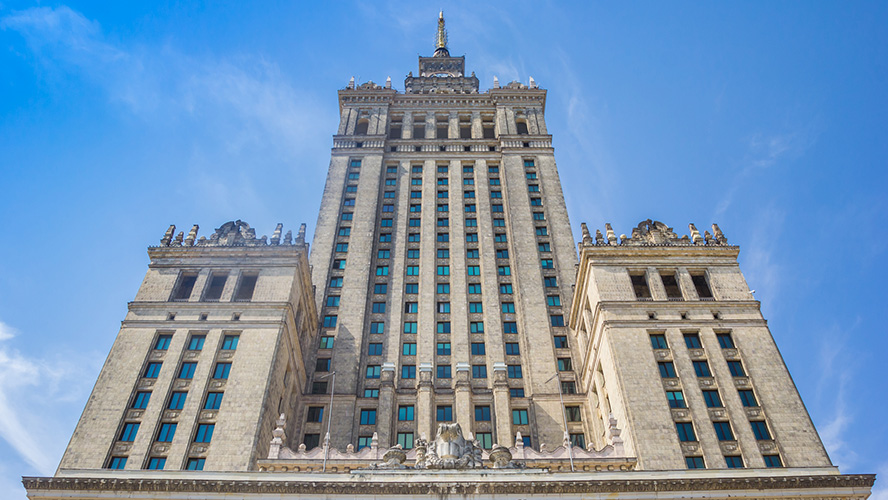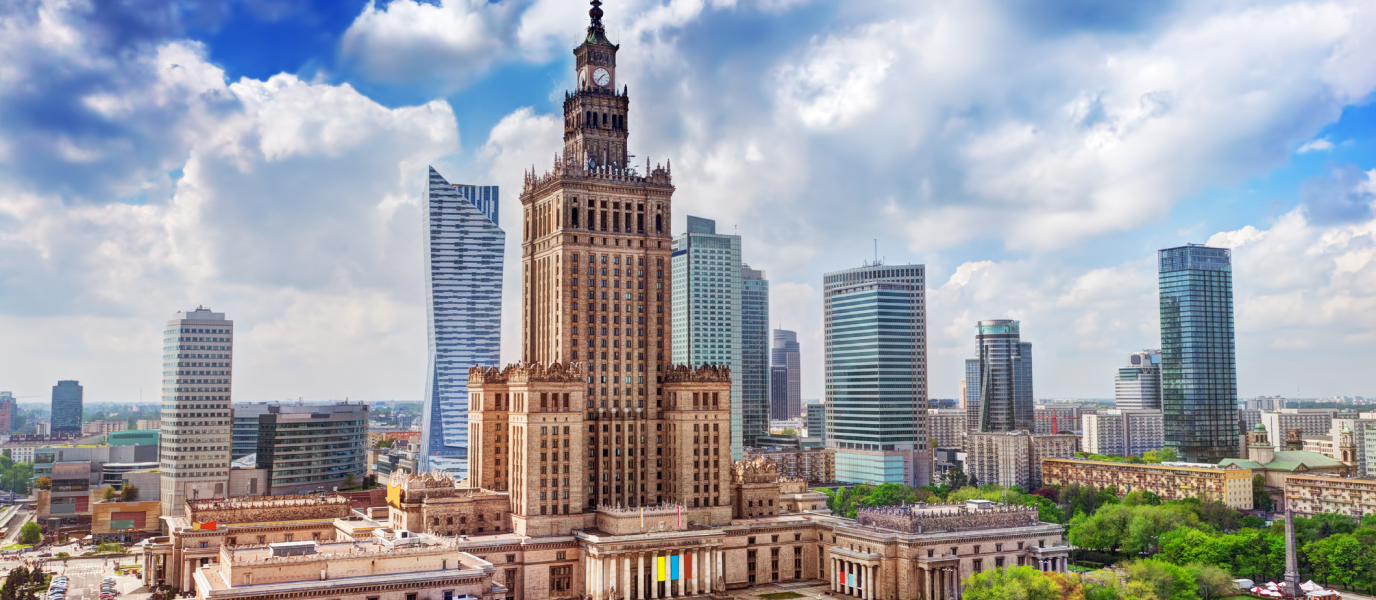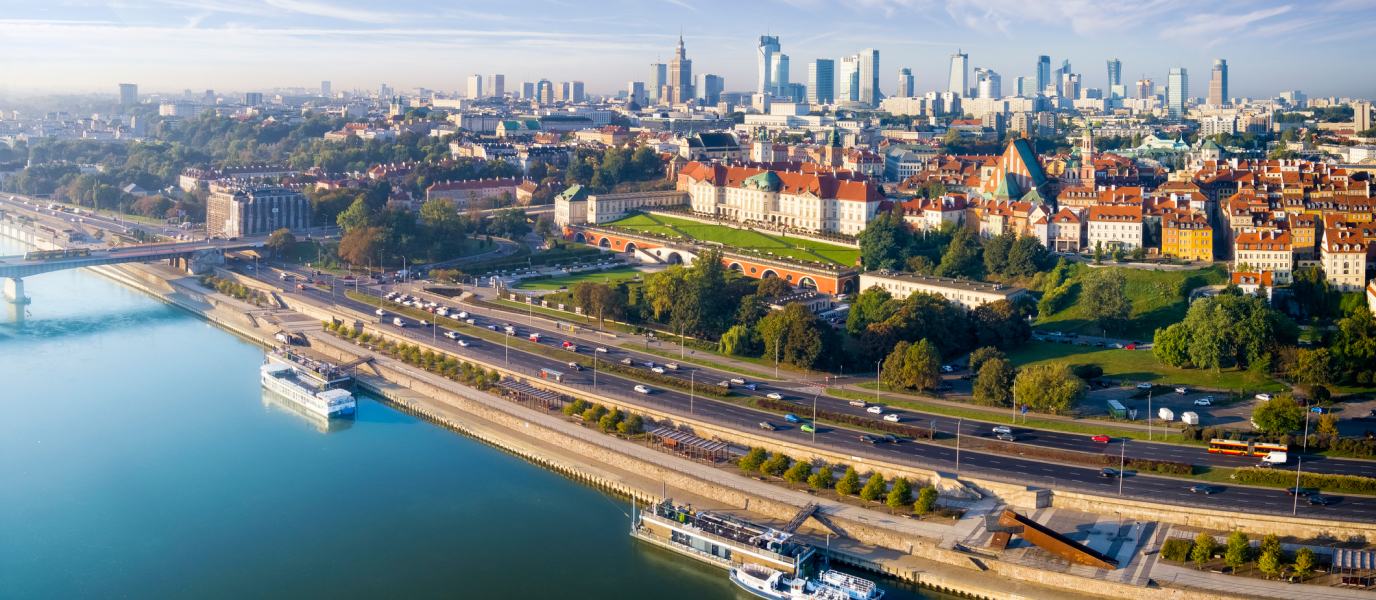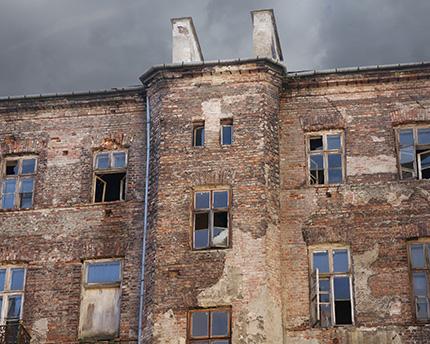The Palace of Culture and Science (Palac Kultury i Nauki, in Polish) is a gigantic, Soviet-style, 30-storey cultural centre whose silhouette dominates Warsaw’s city centre. It is the country’s tallest building — and its most controversial.
The entrance to the Palace is decorated with the statues of Copernicus and Mickiewicz, and its detractors say that the building’s caretaker is the happiest man in Warsaw, because he is the only person who doesn’t see it when he opens his windows.
However, while the Palace of Culture and Science may not be popular with all of Warsaw’s citizens, it has become a great tourist attraction, and almost every visitor to the city wants to go up in the lift to the 30th floor to enjoy the panoramic views from the palace’s terrace. Visitors can also enjoy a coffee at 114 metres above ground.
The history of the Palace of Culture and Science
The origins of the Palace of Culture and Science date back to 1950, when Stalin wanted to build a monument to the glory of socialism in Warsaw, one that would compete with the grandiosity of the tallest buildings in the United States, such as New York’s Empire State Building. We need to remember that this was back in the times of the so-called Cold War.
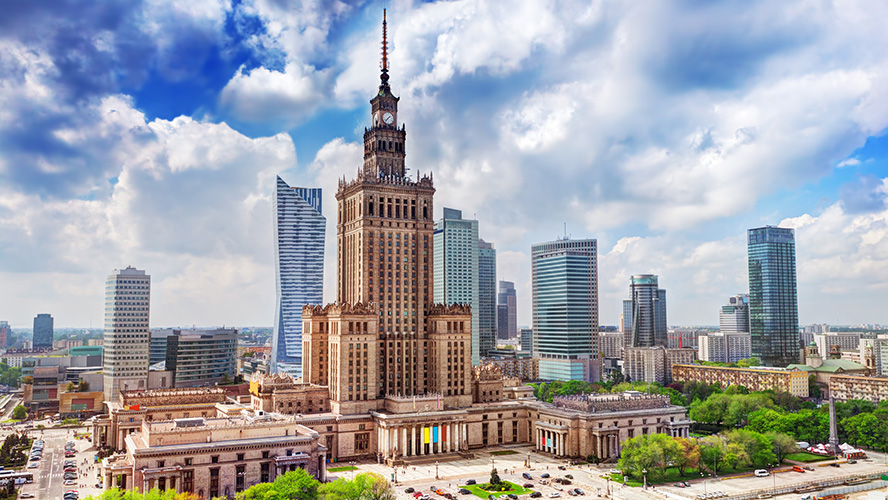
So, between 1952 and 1955, in record time, over 3,000 people built this concrete behemoth, which is a replica of Moscow’s Lomonosov University. At first, the building was named after Joseph Stalin, and was surrounded by the so-called ‘communist saints’: miners, working women, soldiers, militiamen, archers — and (although nobody quite knows why) the figure of Hans Christian Andersen.
Opposite the main entrance is a stone platform from which the Central Committee of the Polish United Workers’ Party saluted those attending the 1st of May marches. Meetings of the Party also took place inside the building.
Museums, exhibitions, theatres…
Warsaw’s Palace of Culture has over 3,000 rooms. In addition to offices, it houses two theatres, three cinemas, a conference hall, a swimming pool, several museums, a tourist office, and a wide range of public institutions. The building only has two cellars, but for a long time a legend circulated in the city that underneath the building were subterranean towers several storeys high, as well as secret galleries that stretched right across the city.
Concerts, plays and film screenings are held around the Palace in summer. And in winter, a skating rink is set up. At night, the Palace is illuminated, and becomes almost like a lighthouse in the city centre.
